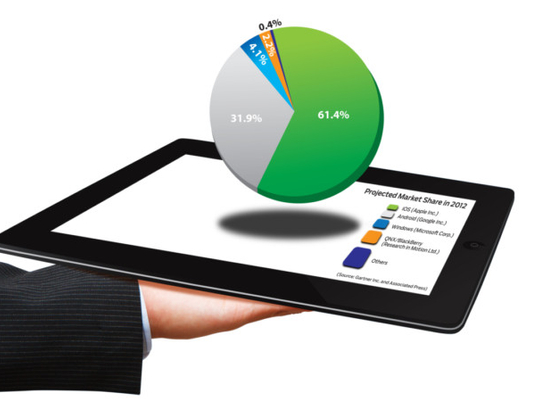
Until just three years ago, most people thought of tablets — and rightfully so - as medicine that could be swallowed with ease. Now this moniker for a popular product is proving to be the tech industry’s miracle pill, one that consumers cannot wait to gobble up.
Many of the world’s major technology firms are lowering the prices of their tablet computers, in what appears to be more than a passing trend. As everyone tries to grab a substantial share of the market, not only are prices of tablets dropping rapidly, consumers are also benefitting from extra features and bundle offers.
Cheap works better
After HP made its now defunct TouchPad available for $99 (about Dh361) through a sale on eBay, Lenovo priced its IdeaPad A1 under $200, Google launched its Nexus 7 for $199 matching Amazon’s Kindle Fire and undercutting Apple’s iPad. Just about every tablet manufacturer decided to get ahead of the game.
Sleek new low-cost tablets, some with exceptional features, have flooded markets in recent months and continue to challenge existing brands. Reports from all parts of the world spell good news for consumers, especially those who will not or cannot spend on more expensive models.
According to information technology researcher and adviser Gartner’s April report, worldwide media tablet sales are forecast to touch 119 million units in 2012, a whopping 98 per cent increase on last year’s sales of 60 million units.
Increased sales are not the only impact of budget pricing; easy availability and affordability also means that tablets are being put to unusual uses across industries. Companies are increasingly opting to put them in the hands of customers at resorts, restaurants and retail stores.
Opportunities on board
Cruise ships are beginning to provide tablets to passengers with personalised information on schedules, sightseeing trips and on-board activities. Airlines are considering tablets as replacements for numerous paper documents that pilots carry for flight and weather information. Distributors are experimenting with tablets in warehouses. Sales people are being better equipped with customised presentations loaded on their tablets.
The low-priced end of the tablet market also keeps getting more interesting, as established players battle it out to lure customers with cheaper hardware. In June, the “world’s cheapest tablet computer” was unveiled with a faster processor, longer battery life and more programming capability than its earlier avatar. Originally projected as a $35 laptop, India’s Aakash 2 currently costs $40, with the target price expected to be achieved after further orders. Meanwhile, new entrants are making their mark with promotional prices at launch. In April, Xtex’s My Tablet 7 debuted for $150 and appears to be a winner.
A few weeks ago, Idealo, a German price comparison site, conducted a survey of 1,200 tablet products from 149 tablet makers in Europe. The list included an average of ten variations per product line in screen size and capacity. The site averaged the price of a certain product across several outlets to determine price changes in 2012. Tablets manufactured by Archos showed the biggest dip, with a decrease of 27.2 per cent in the average price from February to June. The average prices for Asus, Samsung and Archos tablets dropped by 17.5 per cent during the same time period, while the Apple iPad only showed a 4.5 per cent drop.
Decisions, decisions
Analysts attribute the decrease in prices to a growing number of new entrants in the market and to inventory clearing. For instance, when Amazon sold its oversized Kindle DX e-reader for a discount of $110 off its regular price, it was clearly expected to make way for a new model.
Google’s Nexus 7 was an undoubted success at its July launch and is pegged as the best seven-inch tablet in the market today. It is far smoother than any of the tablets from Barnes & Noble and Amazon, has more apps and is faster at switching between multiple programmes. But more importantly, it is priced lower than most other premium products, at a mere $199.
Microsoft’s ARM-based Surface tablet, due for launch on October 26 this year — the same day as Windows 8, is also expected to be priced at $199. According to media reports, the price point was revealed at the TechReady 15 conference, an internal technical event for Microsoft employees.
From a solitary player and one superlative product, tablets now come in more varieties than branded painkillers. With choice comes decision and that perhaps is the only pain now associated with their purchase. Should consumers eschew high-priced perfection and find economical alternatives? Or is quality still all that counts?
— Special to GN Focus










